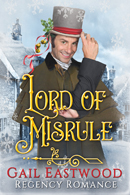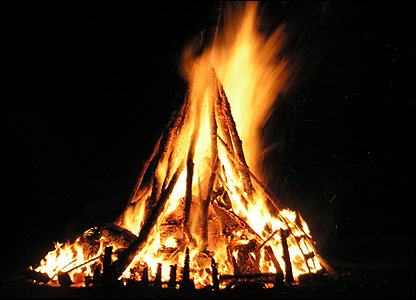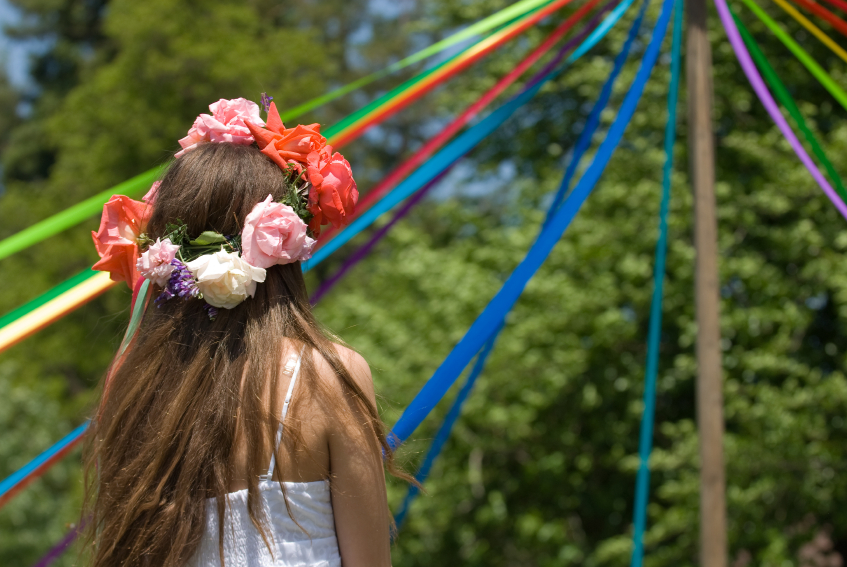New Year’s Eve has come and gone, and here we are, already three days into the new year. If you were hoping to increase your chances for a lucky year, it’s too late now for most of the folk lore and practices you might have tried!

The Risky Regencies blog has been around since 2005, so we have covered a lot of January beginnings by now. If you’re in the mood, scroll down through our archives list and pick some early January posts at random. Some themes are recurring –for instance, making resolutions for the new year, which Regency people seem to have done just as we do today. But some of the other old customs seem to have fallen by the wayside. In January of 2016 my post included quite a few gathered from a variety of cultures.
Just for fun, below is an excerpt from my 2018 December release, Lord of Misrule. The main characters are traveling on New Year’s Eve and must spend the night at an inn. Nevertheless, they make an attempt to honor a few old customs. How did you spend your New Year’s Eve? Did you try to follow any old practices to influence your year ahead?

“Tell me, what would you all have been doing to celebrate the new year in Little Macclow if I had not spirited you away?” Lord Forthhurst said, introducing a new line of conversation.
“Oh, playing cards or charades, roasting chestnuts, singing or dancing, teasing each other with puzzles and riddles to try our brains,” said Lady Anne.
“Dining on plum puddings and mince pies. Listening for the peal of the bells to tell us the new year has begun,” the Squire added.
“We might have been entertaining any visitors in a similar manner,” Miss Tamworth said. She had resumed her seat and turned her unfathomable blue eyes on him. “I had considered asking you to be our midnight caller.”
“The old first-footer custom?” He knew no one who followed it. Mostly it was practiced up in the northern counties and Scotland. Still, he was flattered. The first person to step into a house after the stroke of midnight was supposed to bring luck and set the tone for a good and prosperous year. He doubted he was a likely candidate for any such thing. “I am honored, but why in heaven’s name would you ask me?”
“Oh, just because it is considered much luckier if the visitor is a handsome man.” She shrugged, her tone utterly off-handed.
He looked for any sign that she was flirting. Catching her eye, he tested her with a devilish grin. “Ah, so you admit that you find me handsome?”
Her frank, clear gaze seemed perfectly in earnest. “I needn’t admit it–I say so quite freely, Lord Forthhurst. It is simply a fact about you, one that must be obvious to anyone with eyes. …”
…“’Tis a shame you’ll not have the opportunity to be first-footer at the vicarage, Lord Forthhurst,” Squire said, rescuing him from having to respond. “The vicar serves a very tasty punch on New Year’s Eve that I suspect you would like. It has rendered many a visitor barely able to make his way home again after indulging.”
“That sounds quite wicked for a vicar. Indeed, I am sorry to forego both the honor and the pleasure.”
A short while later, they decide to leave their private parlor to join in the revelry downstairs in the public room.
“I think we should all go down and celebrate the new year’s arrival with everyone else.” She looked pointedly at Cassie and the viscount. “Did you bring new clothes to wear?”
“New clothes?” Lord Forthhurst tilted his head, looking bewildered. He clearly did not know much about country customs.
“Yes, to bring luck and prosperity in the new year.”
“I see. I’m afraid I did not bring any.” He sounded unconvinced.
“I did not have any to bring,” Cassie admitted.
“Well, I have a splendid idea how to fix that,” Lady Anne declared, her hands sweeping up into the air. “I shall loan Cassie one of my shawls, and Squire can loan Lord Forthhurst one of his cravats. The items will be new–to you, at least. I feel certain that will serve. Oh, do let us get ready, and then go down.”
Belated or not, I and my sister Riskies all wish you the very best in 2020. That includes lots of happy reading!





